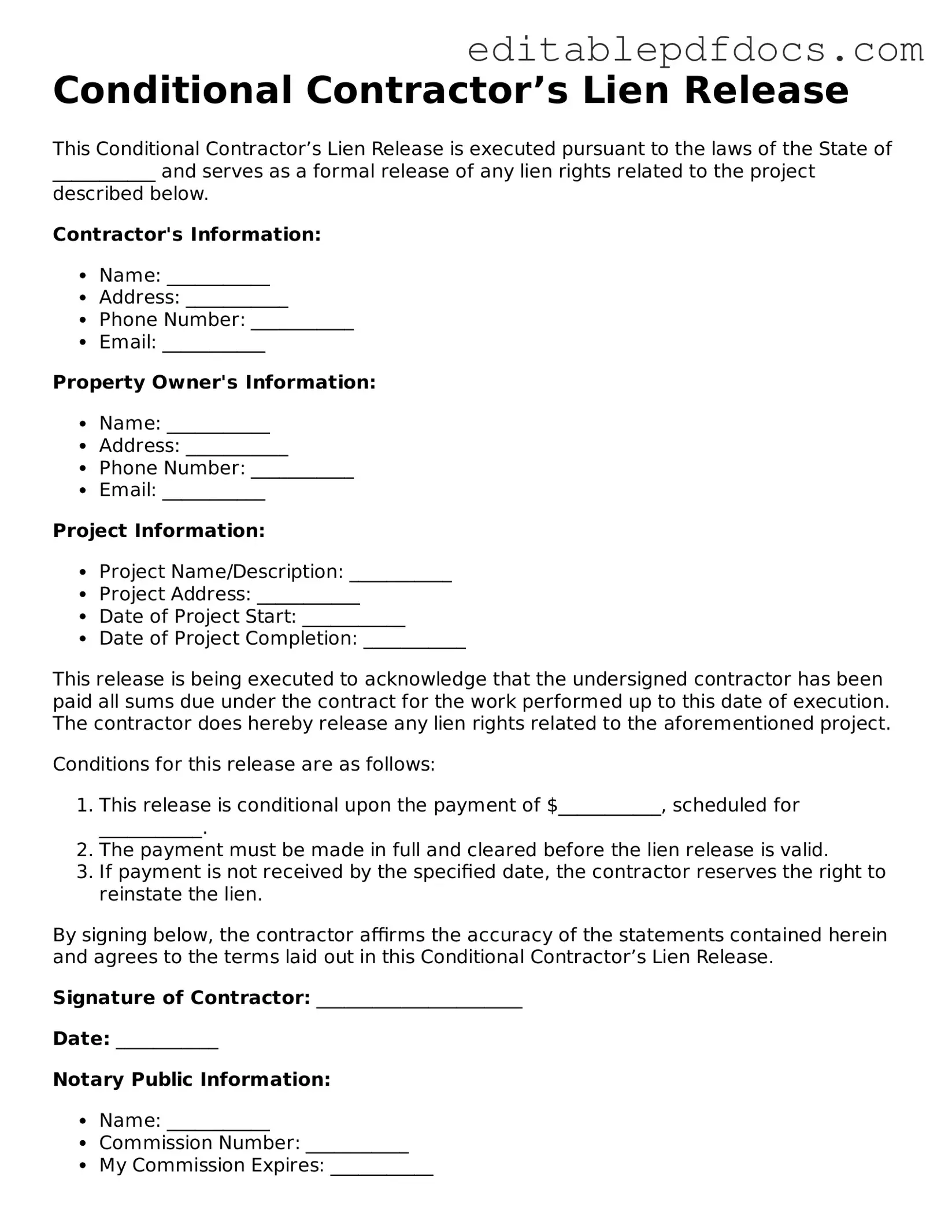Filling out the Conditional Contractor’s Lien Release form can be straightforward, but many people still make common mistakes that can lead to complications. One frequent error is forgetting to include all necessary project details. Without the project name, address, and relevant dates, the form may lack clarity, causing delays or disputes.
Another common mistake is not providing accurate payment information. It's essential to specify the amount being released. Leaving this blank or entering the wrong figure can create confusion and may lead to financial issues down the line.
Many individuals also overlook the importance of signatures. The form must be signed by the appropriate parties. Failing to obtain the necessary signatures can render the release invalid, which defeats its purpose.
In some cases, people forget to date the form. A missing date can lead to questions about when the release was issued, potentially complicating matters if disputes arise later. Always ensure the date is clearly noted.
Another mistake is using vague language. The form should be clear and concise. Ambiguous terms can lead to misunderstandings regarding what is being released, which can complicate the process.
Some individuals neglect to keep copies of the signed form. It’s crucial to retain a copy for personal records. Without it, proving the release was issued can become challenging if disputes arise.
Failing to review the form before submission is another common error. A quick check can catch mistakes such as typos or missing information. Taking the time to review can save a lot of hassle later.
People sometimes confuse the Conditional Contractor’s Lien Release with other lien forms. Understanding the specific purpose of this form is vital. Using the wrong form can result in legal complications.
Additionally, not consulting with a legal or contract professional can lead to mistakes. While the form may seem simple, having expert guidance can help avoid pitfalls that could have significant consequences.
Lastly, some individuals do not understand the implications of the release. A Conditional Contractor’s Lien Release does not mean that the contractor has been fully paid for all work. It’s important to know what you are signing to avoid future liabilities.
